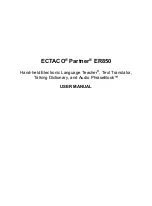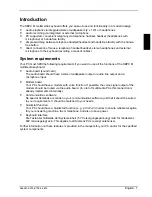Reviews:
No comments
Related manuals for microSTATION

Partner ER850
Brand: Ectaco Pages: 39

Multi Function Panel USB
Brand: CH Products Pages: 2

P+1
Brand: Ploom TECH+ Pages: 48

GK1050
Brand: Asus Pages: 21

EeeKeyboard PC EK1542
Brand: Asus Pages: 48

KBPC M
Brand: Siemens Pages: 12

SINUMERIK ONE KB 1500
Brand: Siemens Pages: 38

PortaTone PSR-22
Brand: Yamaha Pages: 20

PortaTone PSR-260
Brand: Yamaha Pages: 27

PortaTone PSR-28
Brand: Yamaha Pages: 36

PortaTone PSR-270
Brand: Yamaha Pages: 33

Portatone PSR-215
Brand: Yamaha Pages: 25

PortaTone PSR-27
Brand: Yamaha Pages: 36

PortaTone PSR-210
Brand: Yamaha Pages: 42

PortaTone PSR-220
Brand: Yamaha Pages: 52

PortaTone PSR-2500
Brand: Yamaha Pages: 68

Portatone PSR-273
Brand: Yamaha Pages: 78

PortaTone PSR-280
Brand: Yamaha Pages: 92

















